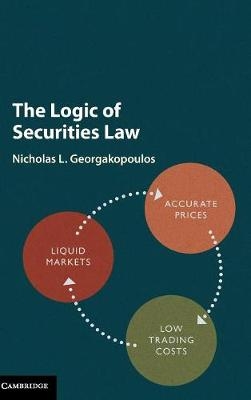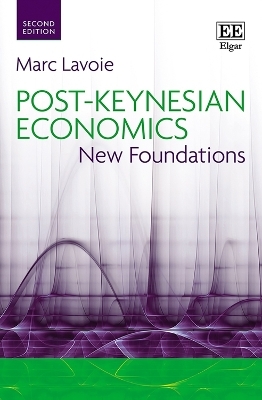
The Logic of Securities Law
Cambridge University Press (Verlag)
978-1-107-15850-4 (ISBN)
This book opens with a simple introduction to financial markets, attempting to understand the action and the players of Wall Street by comparing them to the action and the players of main street. Firstly, it explores the definition of a security by its function, the departure from the buyer beware environment of corporate law and the entrance into the seller disclose environment of securities law. Secondly, it shows that the cost of disclosure rules is justified by their capacity to combat irrationalities, fads, and panics. The third section explains how the structure of class actions is designed to improve deterrence. Next it explores the economic harm from insider trading and how the law fights it. In sum, the book shows how all these parts of securities law serve the virtuous cycle from liquidity to accurate prices and more trading and how the great recession showed that our securities regulation reacted mostly adequately to the crisis.
Nicholas L. Georgakopoulos is the H. R. Woodard Professor of Law at the Robert H. McKinney School of Law, Indiana University. He has extensively researched and published on securities law and related fields. His previous publications include Principles and Methods of Law and Economics (Cambridge, 2005), and a co-authored five-volume treatise Blumberg on Corporate Groups.
Foreword Richard Posner; 1. Introduction. Real markets and financial markets; Part I. Definition of a Security: When to Leave Buyer Beware for Seller Disclose?: 2. Toward defining a security; 3. The vacuous definition of a security; 4. The function of investment contract; 5. Pricing mechanisms; 6. From the sale of business doctrine to Gustafson; 7. Gustafson works!; 8. Definition conclusion; Part II. Disclosure: Why Subsidize Informed Traders?: 9. Introduction; 10. An overview of disclosure theories; 11. The failure of the corporate disclosure decision; Part III. Deterrence of Securities Fraud: 12. Introduction to deterrence intensity; 13. Comparing the economic function of deceit to that of securities fraud; 14. Reliance in deceit and securities fraud; 15. Conclusion of deterrence intensity; Part IV. Insider Trading: 16. Introduction to insider trading; 17. Insider trading law; 18. Defining insiders; 19. Concluding the insider trading analysis; Part V. The Virtuous Cycle of Liquid Markets, Accurate Prices and Cheap Trading: 20. The virtuous cycle; 21. Closing note: financial crises and securities law.
| Erscheinungsdatum | 05.05.2017 |
|---|---|
| Vorwort | Richard Posner |
| Zusatzinfo | 14 Halftones, black and white |
| Verlagsort | Cambridge |
| Sprache | englisch |
| Maße | 160 x 236 mm |
| Gewicht | 460 g |
| Themenwelt | Recht / Steuern ► EU / Internationales Recht |
| Wirtschaft ► Allgemeines / Lexika | |
| Wirtschaft ► Volkswirtschaftslehre ► Finanzwissenschaft | |
| Wirtschaft ► Volkswirtschaftslehre ► Makroökonomie | |
| ISBN-10 | 1-107-15850-8 / 1107158508 |
| ISBN-13 | 978-1-107-15850-4 / 9781107158504 |
| Zustand | Neuware |
| Informationen gemäß Produktsicherheitsverordnung (GPSR) | |
| Haben Sie eine Frage zum Produkt? |
aus dem Bereich


